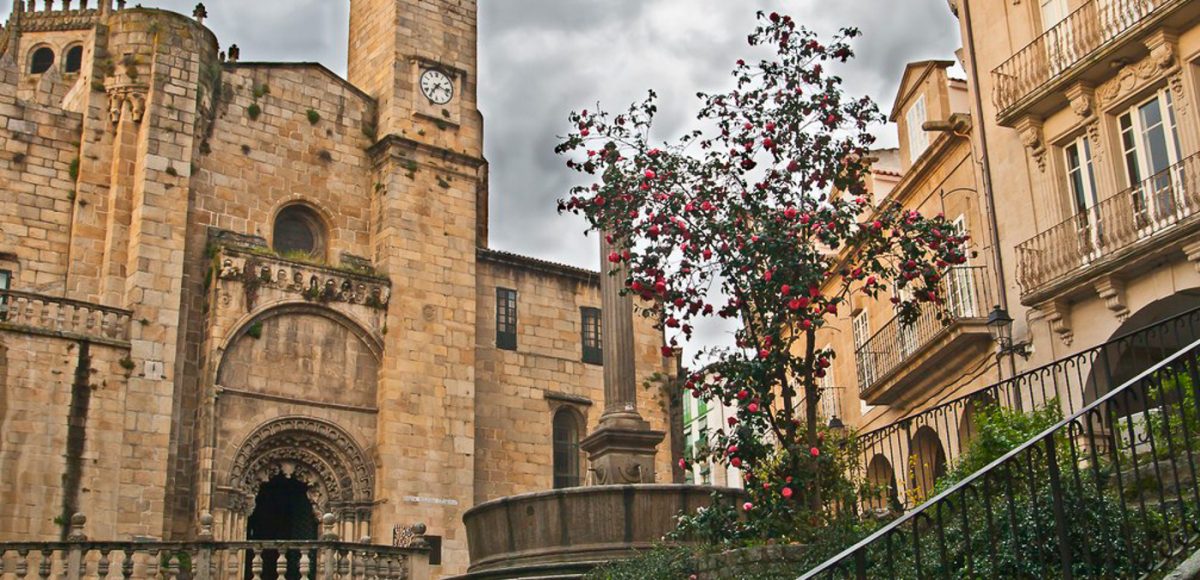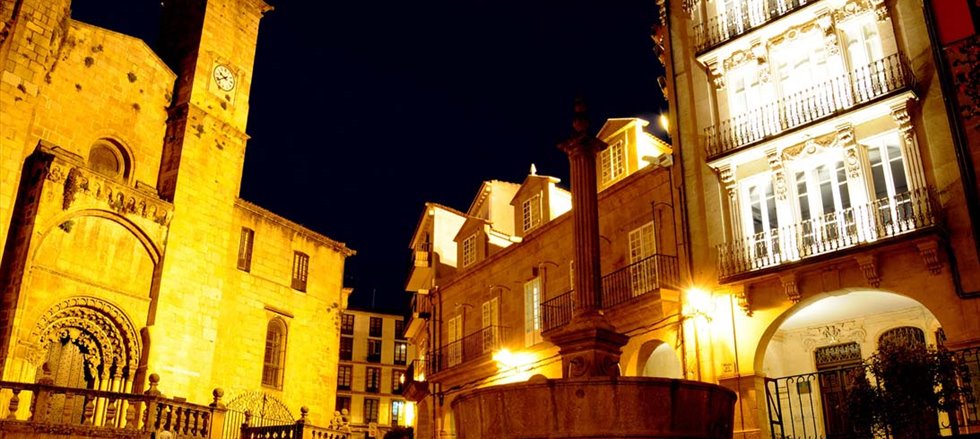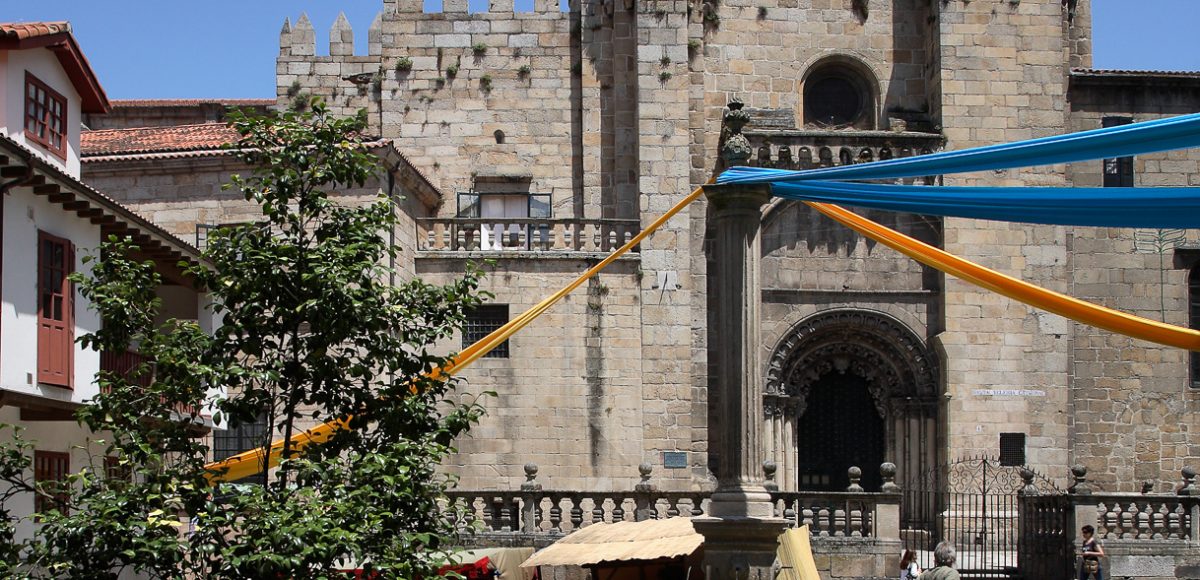
Wheat Square
Praza do Trigo, 6, 32005
Old grain market by the Cathedral's southern façade, surrounded by noble houses.
ES Plaza del Trigo | GL Praza do Trigo
Its irregular shape is due to be more of a crossroads than a square. Its arcades remind us what was its function for decades: an ancient market for ceramics, silversmiths and cereals, from which it takes its name. It is dominated by the Cathedral’s southern façade, which offers magnificent views, and is centered by the New Fountain. Surrounded by porticos and burgeois houses, it is extended by Dames’ Square, the Cathedral’s former orangerie.
Two clocks mark the time at this square, can you find them?
The Cathedral’s southern façade stands out for the defensive aspect conferred by towers and battlements, evoking its dominance of the city, and the duality of the functions of the bishop, religious but also civil leader. The Clock Tower, from the 16th century, was added to the original tower, and the differences between the two stoneworks are still noticeable. It is not the only mechanism for measuring time to find here; on one of the columns we can also see a sundial (but notice that solar time is two hours ahead).
If we look at the fountain domaining the square (called New Fountain as it came to replace an earlier one from the 18th century), to the right side we will see a row of houses among which stands out an overloaded neo-baroque façade, designed by architect Jesús Vidal and dating from the late 19th century. On the granite, ornamentation will accumulate as we climb in altitude, to take advantage of the slope of the square and its visual perspective. The doorpost, with the emblem of trade and industry, reveals the activity of the former owner. Today it is part of the municipal offices. To the left we can find the 18th-century house of the Temes family.
On the left, the square extends into a small courtyard known as Dames’ Square, which in medieval documentation appears collected as an “orangerie”. Some authors believe that it could be the space for the Cathedral’s unfinished cloister. Here we find the headquarters of the Confederation of Entrepreneurs of Ourense, which occupies the Renaissance building of the former house of the Gayoso family, as evidenced by the coat of arms of its façade.



